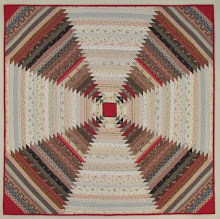14 December 2012
truancy
I've been a blogging truant for most of 2012, but promise something new to wind up this year.
First New Year's Resolution? I will blog at least once a week in 2013. I will blog at least once a week in 2013!
26 April 2012
Today is Poem In Your Pocket Day
and shoot your words into the bulls-eye.
05 February 2012
First Impression
Being a lover of winter, snow, and fairy tales, I was immediately intrigued when I learned of Eowyn Ivey’s first novel, The Snow Child, set in Alaska. Newlyweds in 1966, hubby and I bought the books Homesteading in Alaska, and How to Get Out of the Rat Race and Live on $500 a Year. That never happened. Still dreamers, Alaska is on our bucket list.
The Snow Child is a delight to hold. The paper is lightly textured and feels like cotton. An impish mysterious small figure peeks from behind the paper-white bark of a stark tree. A red fox peeks from behind another tree and watches the child. The dark night holds a sliver of the moon- or is it an eclipse? Perhaps an eye? I’m only on page forty, so I’m eager to discover everything that will be revealed in the story.
I inspected this book carefully before beginning to read. First edition 2012. The paper feels gentle. The type is the perfect size for bedtime reading by tired eyes. There is a handmade quality to this edition. The edge of the book is not surgically sliced at a hard ninety degree angle. The pages are slightly angled, almost divided in sections, like the sewn signatures of a hand made book. The cover beneath the dust jacket is white as snow and the end papers are dark-night blue. Lovely. A mother who always swaddled her babies, I feel Eowyn Ivey’s story is revered by the designers of her book and her publisher Little, Brown and Company by the way The Snow Child is presented. I know I am in for a treat!
Swaddled in bed last night beneath a wool blanket and down throw, our house as still as Jack and Mabel's homesteader cabin, I began reading The Snow Child and slipped with them into their world near the Wolverine River in Alaska. I read slowly, pondering Eowyn Ivey’s phrases, sentences, and skill as a writer. And, tonight, when I read from The Snow Child, I hope to again fall asleep with a tear on my cheek that sparkles as one of Alaska’s snowflakes.
Cathy Safiran
February 5, 2012
25 September 2011
Off the Color Wheel
I chose to draw Trigger purple. Crayon tight in hand, trying to transfer the image behind my eyelids to the manila paper, I began with the pointed ears, keeping them a little below the sky. Cautiously, I headed down the paper, curving at the base of the neck and onto the back. I decided since Trigger was in the corral I wouldn’t need a saddle, but would make a little dip where it would rest. Down, over, up a little bit to the back end of the horse. Whoa! Trigger looks like he’s got a big blanket roll there. I knew all the horse-talk from the TV cowboy shows. Another creative decision awaited. Take a deep breath, draw all four legs and feet, and stop. The tail would be easy and be drawn last. Okay. Easy.

25 March 2011
going high tech
new Kindle device
came in quiet plain brown box
seems cold, clinical
no paper, no ink
examining wireless
lightweight plastic screen
seems impersonal
platonic relationship
perhaps I’m too old
staid in my known ways
secondhand, indie bookstores
wandering, browsing
ready, get set, go
I love new technology
bravely venture forth
at the coffee shop
firing up wireless
so much temptation
19 November 2010
Alchemy
Alchemy--after William Shakespeare
May I propose to make a quilt with you,
Cut sadness from old wounds and scars untold?
Pray this lifeʼs garden bloom all lovely hues,
Before sharp frost sneaks in our beds so cold.
This stone floor boasts remnants of cast off clothes,
Cerulean skirt blood-soaked on the hem,
Black mourning suit tear-stained with old sad woes,
It seems a quilt from these canʼt be a gem.
I hear you can be very hard to please.
Dark nightmares I do not intend to breed.
Perchance for strange new brilliance I may tease,
And choose bright happy cloth but never plead.
I'll not hang tough nor tempt you more with pause.
Come here, slip 'neath this silken rainbow gauze.
Cathy Safiran
November 17, 2010
24 July 2010
The Beekeeper


